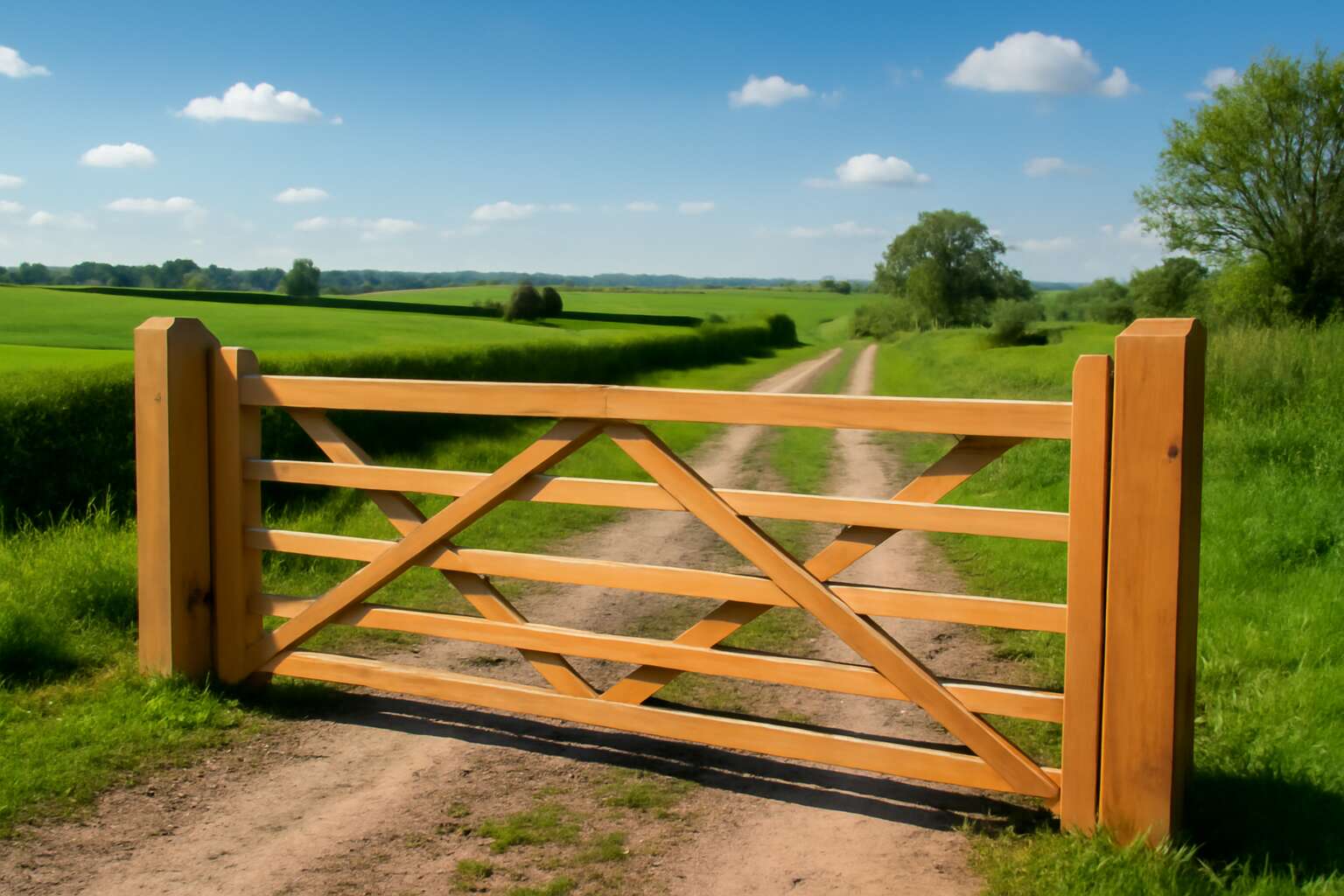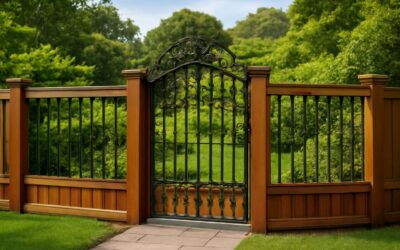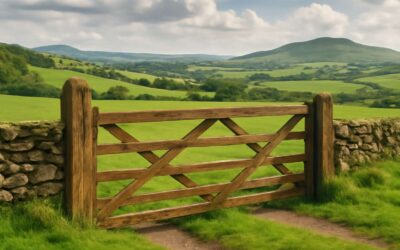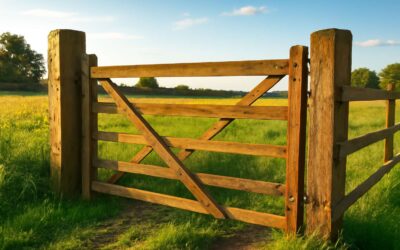Understanding Farm Gate Sizes
Overview of Typical Farm Gate Dimensions – Provide a general introduction to standard sizes
Farm gates are an essential part of rural infrastructure, yet many overlook the importance of choosing the right size. When considering what size do farm gates come in, it’s clear that standard dimensions have evolved to meet diverse needs across agricultural settings. Whether for livestock, machinery, or access control, knowing the typical dimensions can help prevent costly mistakes and ensure smooth operations.
Most farm gates are designed with versatility in mind, but there are common dimensions that dominate the market. For example, a typical farm gate width ranges from 10 to 12 feet, accommodating large machinery or livestock movement with ease. The height usually falls between 4 and 5 feet, providing enough security without obstructing views or access. Understanding these standard sizes allows farmers and landowners to select the perfect gate, whether it’s for a small holding or a sprawling farm.
In terms of material and design, the most prevalent options include timber, steel, and aluminium. These materials are often manufactured to fit standard sizes, but custom sizes are also available to match unique requirements. By recognising what size do farm gates come in, you can better align your choice with your specific needs, ensuring durability and functionality in the long run.
Factors Influencing Farm Gate Sizes – Discuss variables like farm type, livestock, terrain
Farm gates are more than just functional barriers; they are vital links that connect the heart of rural life with its daily rhythms. When considering what size do farm gates come in, it’s essential to recognise that these dimensions are influenced by a myriad of factors rooted in the unique character of each farm. Each piece of land tells its own story—terrain, livestock, and the type of farming all play a role in determining the perfect gate size.
For instance, farms with rolling hills and uneven ground often require wider, sturdier gates to accommodate large machinery and livestock movement with ease. Livestock type is equally crucial—cattle, sheep, or horses all have specific space needs, impacting the ideal width and height of the gate. Terrain can dictate whether a gate needs to be more robust or slightly narrower to navigate tricky patches without compromising security. Ultimately, understanding these variables helps landowners select the right dimensions, ensuring that their gates serve as both a practical necessity and a reflection of the land’s natural beauty.
Common Farm Gate Widths
Standard Widths for Different Farm Types – Cattle farms, sheep farms, mixed farms
In the grand ballet of farm management, understanding what size do farm gates come in can make all the difference between a charming pastoral scene and a logistical nightmare. For cattle farms, where the herd’s size and behaviour demand sturdy, wide entrances, standard widths typically range from 10 to 16 feet. Sheep farms, on the other hand, often require narrower gates—roughly 4 to 8 feet—allowing easy passage without compromising security. Mixed farms, juggling both livestock types, often opt for versatile widths around 10 feet, ensuring flexibility without sacrificing practicality.
Interestingly, the conversation around what size do farm gates come in isn’t merely academic. It’s influenced by factors like terrain, livestock mobility, and the intended purpose of the gate—be it for vehicle access or merely pedestrian movement. For those with a penchant for custom solutions, modular options can adapt to specific farm needs, proving that in the world of farm gates, one size rarely fits all. After all, a gate that’s too narrow might hinder movement, while an oversized one could turn into an unintentional obstacle—an irony not lost on seasoned farmers.
Adjustable and Custom Sizes – When and why custom sizes are preferred
In the intricate dance of farm management, where every detail shapes the harmony of daily operations, understanding what size do farm gates come in can be pivotal. While standard widths serve as a reliable baseline, the reality of diverse terrains and livestock behaviours often demands more tailored solutions. Adjustable and custom-sized farm gates emerge as essential tools for farmers seeking flexibility and precision in their infrastructure.
When standard sizes fall short of the unique demands of a particular farm—perhaps due to uneven ground or specialised livestock—custom sizes become not just advantageous but necessary. They allow for seamless integration into the landscape, ensuring smooth passage for vehicles and livestock alike. For farms with complex layouts or specific operational needs, bespoke gates can be crafted to exact measurements, avoiding the pitfalls of ill-fitting fixtures that hinder movement or compromise security.
Moreover, adjustable farm gates offer a dynamic solution, capable of accommodating evolving requirements over time. This adaptability proves invaluable for mixed farms or those expanding their herd or flock, where rigidity could impede progress. The choice of custom sizes and adjustable options underscores a critical realisation: in the realm of farm gates, one size rarely fits all, and bespoke solutions are often the keystone to a well-functioning farm environment.
Standard Farm Gate Heights
Typical Heights for Safety and Practicality – Safety considerations for livestock and equipment
In the grand tapestry of rural life, the height of a farm gate is often the silent sentinel guarding both livestock and equipment. While the question of what size do farm gates come in may seem straightforward, it conceals a nuanced spectrum driven by safety and practicality. Standard farm gate heights typically range from 1.2 to 1.8 metres—tall enough to deter unwelcome visitors or wandering predators, yet accessible enough for everyday farm operations.
Safety considerations are paramount; a gate that’s too low jeopardises livestock, risking escapes and injuries, while an excessively tall barrier can impede movement and complicate maintenance. For livestock such as cattle, a typical height of around 1.5 metres ensures animals are contained without feeling penned in, whereas sheep gates often settle between 1.2 and 1.4 metres, balancing security with ease of access.
It’s a delicate dance—matching the gate height to the needs of the farm’s inhabitants and equipment. Sometimes, standard widths are complemented by adjustable or custom sizes, especially when terrain or specific livestock breeds demand bespoke solutions. After all, in the realm of farm gates, size is more than measurement; it’s the foundation of safety and productivity.
Variations Based on Use Cases – Gates for horseback riding, heavy machinery access
In the vast, enchanted landscape of agriculture, the size of a farm gate can transform from a mere entryway into a vital guardian of safety and efficiency. For specific use cases like horseback riding or heavy machinery access, the dimensions of these gates take on a new significance. The question of what size do farm gates come in often reveals a surprising diversity, tailored to meet the unique demands of each operation.
Gates designed for horseback riding, for instance, tend to be lower and more accessible—typically around 1.2 to 1.4 metres in height—allowing riders to pass smoothly while maintaining security. Conversely, when heavy machinery needs to traverse farm boundaries, larger gates are essential. These are generally constructed with heights ranging from 1.8 metres upwards, ensuring ample clearance for wide equipment and preventing damage or accidents.
Sometimes, farms with varied needs opt for adjustable or custom-sized gates, particularly when terrain or livestock breeds demand bespoke solutions. The flexibility in sizes for such specialised use cases underscores the importance of understanding what size do farm gates come in—a question that embodies both safety and practicality in rural life’s grand tapestry.
Materials and Construction Affecting Size Options
Common Materials Used – Wood, metal, composite materials
The materials chosen for farm gates dramatically influence their size options, shaping not just the gate’s appearance but also its durability and functionality. Whether crafted from sturdy wood, resilient metal, or innovative composite materials, each offers unique benefits that determine feasible dimensions. Wood, for instance, provides a traditional aesthetic and ease of customisation, but it may require more frequent maintenance, especially in larger sizes. Metal gates, often made from galvanised steel or aluminium, excel in strength and longevity, accommodating larger spans without compromising stability. Composite materials blend the best of both worlds—lightweight yet durable, allowing for versatile size options that can withstand tough environmental conditions.
The choice of material directly impacts what size do farm gates come in, as each material’s inherent strength and flexibility set practical limits. For example, larger wooden gates need robust framing to prevent sagging, while metal gates can span wider openings with fewer support beams. Commonly, the dimensions are dictated by the intended use—be it for cattle, sheep, or machinery access—making material selection a critical factor in determining feasible size options. When planning for larger or more specialised gates, custom solutions often become necessary to ensure safety, security, and longevity, regardless of the material used.
Impact on Gate Size and Durability – How material choice influences dimensions
The choice of material and construction techniques profoundly shape what size do farm gates come in, influencing both their visual appeal and resilience. When selecting a farm gate, understanding how materials respond to size constraints is essential—large wooden gates, for example, require meticulous framing to prevent warping or sagging, while metal gates can often span wider openings with fewer support beams. The inherent strength of each material determines its capacity to accommodate different dimensions, ensuring durability over time.
Materials like galvanised steel or aluminium are naturally suited for larger gates, given their ability to withstand environmental stresses without compromising structural integrity. Conversely, composite materials offer lightweight robustness, allowing for versatile sizing options that might be impractical with traditional wood or metal. The interplay between material properties and construction methods ultimately dictates what size do farm gates come in, tailored to meet the diverse needs of modern farming landscapes.
Customizing Farm Gate Sizes
When to Consider Custom Sizes – Specific farm needs, unusual livestock, terrain challenges
When standard farm gate sizes don’t quite fit the unique contours of your land or livestock needs, considering custom sizes becomes an art rooted in practicality. Farms with unusual livestock, such as rare breeds or large animals, often require gates tailored to ensure safety and ease of movement. Terrain challenges—steep slopes, uneven ground, or narrow passageways—also demand bespoke solutions.
Customising farm gate sizes allows for a harmonious balance between functionality and durability, ensuring the gate complements the landscape without compromising strength. For instance, a gate for a hillside pasture might need to be shorter but sturdier, while a livestock access point in open fields could benefit from a broader, more accommodating design.
When pondering what size do farm gates come in, it’s essential to recognise that off-the-shelf options may not always serve the specific demands of your farm’s layout. In such cases, bespoke dimensions offer the flexibility to optimise safety, operational efficiency, and longevity in ways standard sizes simply cannot match.
Working with Manufacturers and Suppliers – Tips for specifying custom dimensions
When working with manufacturers and suppliers to specify custom farm gate sizes, clear communication is key. It’s essential to have precise measurements of your land’s contours, livestock dimensions, and any terrain challenges you face. Providing detailed sketches or photographs can help ensure your specifications are understood accurately, reducing the risk of errors or delays.
Most reputable suppliers will guide you through the process, offering expert advice on how to adapt standard sizes or create bespoke dimensions that fit your farm’s unique needs. Remember, when asking what size do farm gates come in, be prepared to discuss not only width and height but also the materials and safety features required. This ensures the final product is both durable and fit for purpose.
Some farms benefit from a numbered checklist, such as:
- Assess your land’s topography and access points.
- Measure livestock dimensions for safety clearance.
- Decide on gate material considering climate and terrain.
- Consult with suppliers about custom size options and production timelines.
By working closely with experienced manufacturers and suppliers, you can confidently specify custom dimensions that harmonise with your farm’s landscape while maintaining maximum functionality. This collaboration ensures your farm gate is as resilient and practical as it is perfectly tailored to your land’s contours and your livestock’s safety needs.
Regulations and Standards for Farm Gates
Legal Height and Width Requirements – Local and national regulations
In the realm of agricultural infrastructure, understanding the legal landscape surrounding farm gates is as vital as knowing the right size for your needs. Regulations and standards for farm gates’ legal height and width are not arbitrary; they are rooted in safety, accessibility, and environmental considerations. Local and national authorities typically establish specific requirements to ensure that gates do not obstruct visibility, allow for the safe passage of livestock, and accommodate various types of farm machinery.
For example, in many regions, the standard width for a farm gate is around 12 to 14 feet, but this can vary depending on local legislation. Heights are often regulated to prevent livestock from escaping while allowing easy access for maintenance and emergency vehicles. Non-compliance with these standards can result in legal issues, safety hazards, or operational inefficiencies. Therefore, when considering what size do farm gates come in, it’s essential to consult regional regulations to ensure your farm infrastructure remains compliant and functional.
Safety Standards and Best Practices – Ensuring compliance and safety
In the vast tapestry of agricultural infrastructure, safety and compliance are woven into every fibre of the design—yet, one question often remains shrouded in curiosity: what size do farm gates come in? The dimensions of these portals are not merely a matter of convenience; they are a vital element in safeguarding livestock, facilitating machinery access, and adhering to legal standards. The regulations surrounding farm gate sizes are crafted with precision, rooted in the need to balance operational efficiency with safety considerations.
To ensure these thresholds serve their purpose without compromise, it is essential to understand the underlying safety standards and best practices. For instance, regional regulations typically dictate minimum and maximum widths to prevent livestock escapes while accommodating farm machinery. Heights are similarly regulated to allow easy passage for maintenance crews and emergency vehicles, all while preventing animals from jumping over or escaping through inadequate gaps.
When selecting the appropriate size for farm gates, consider the specific use case—whether for cattle, sheep, or heavy machinery. Variations might include gates designed explicitly for horseback riding enclosures or those capable of handling the weight of large agricultural equipment. Working with manufacturers and suppliers becomes crucial, especially when custom sizes are required to navigate terrain challenges or accommodate unusual livestock. Ensuring compliance with local and national regulations guarantees that your farm gates not only meet legal standards but also uphold safety and durability for years to come.
Practical Tips for Choosing the Right Size Farm Gate
Measuring Your Farm and Livestock – How to determine appropriate dimensions
Choosing the right size for a farm gate isn’t just about aesthetics; it’s a crucial safety and operational decision. According to industry standards, the typical question remains: what size do farm gates come in? Understanding this can make a real difference in managing livestock and equipment efficiently. The key is to measure your farm accurately, taking into account the type of livestock and the terrain. For example, cattle farms usually require wider gates, typically around 12 to 14 feet, while sheep farms might only need 4 to 6 feet.
When measuring your farm, consider both the width and height of the gate. Heights generally range from 1.2 to 2 metres, depending on safety needs and livestock type. It’s often beneficial to consult with manufacturers about custom sizes if your farm has unique requirements. This ensures that your gate not only fits perfectly but also stands up to the demands of daily farm life. Ultimately, understanding what size do farm gates come in helps you select the most practical and durable option for your specific needs.
Considering Future Needs and Scalability – Planning for growth or changes
Farm gates are the unsung heroes of rural infrastructure, often overlooked until they suddenly need to be replaced or upgraded. Interestingly, many farmers are surprised to learn that the answer to “what size do farm gates come in” isn’t a one-size-fits-all proposition. Instead, it’s a nuanced conversation influenced by livestock type, terrain, and future expansion plans. The typical range varies from modest 4-foot sheep gates to expansive 14-foot cattle barriers, reflecting the diversity of agricultural pursuits.
Planning for future needs is essential. It’s wise to consider whether your farm might grow or diversify in the coming years. Opting for gates with adjustable widths or custom sizes can save considerable hassle later. For example, a mixed farm might require a gate that can accommodate both small sheep and larger cattle, necessitating a flexible solution. When considering the size of farm gates, think about both current requirements and the potential for growth; this foresight ensures your investment remains practical and durable for many seasons to come.




0 Comments